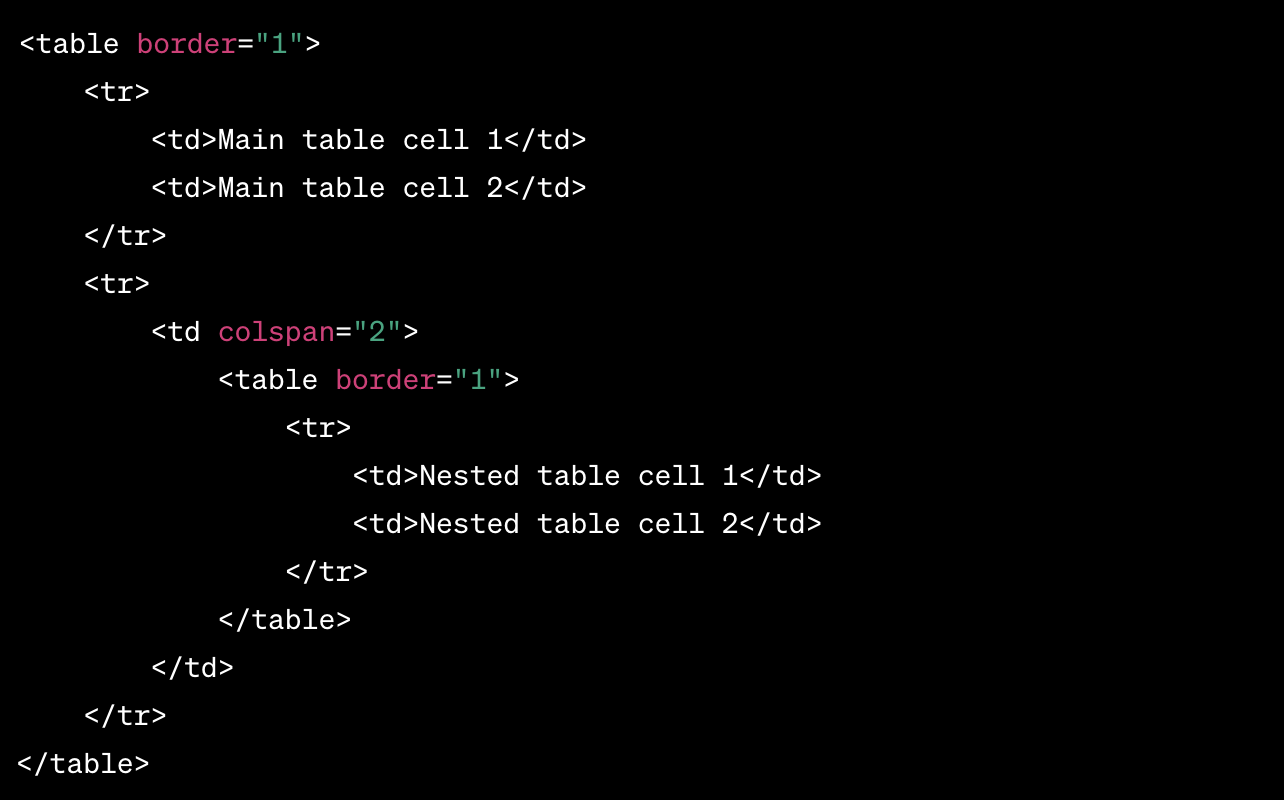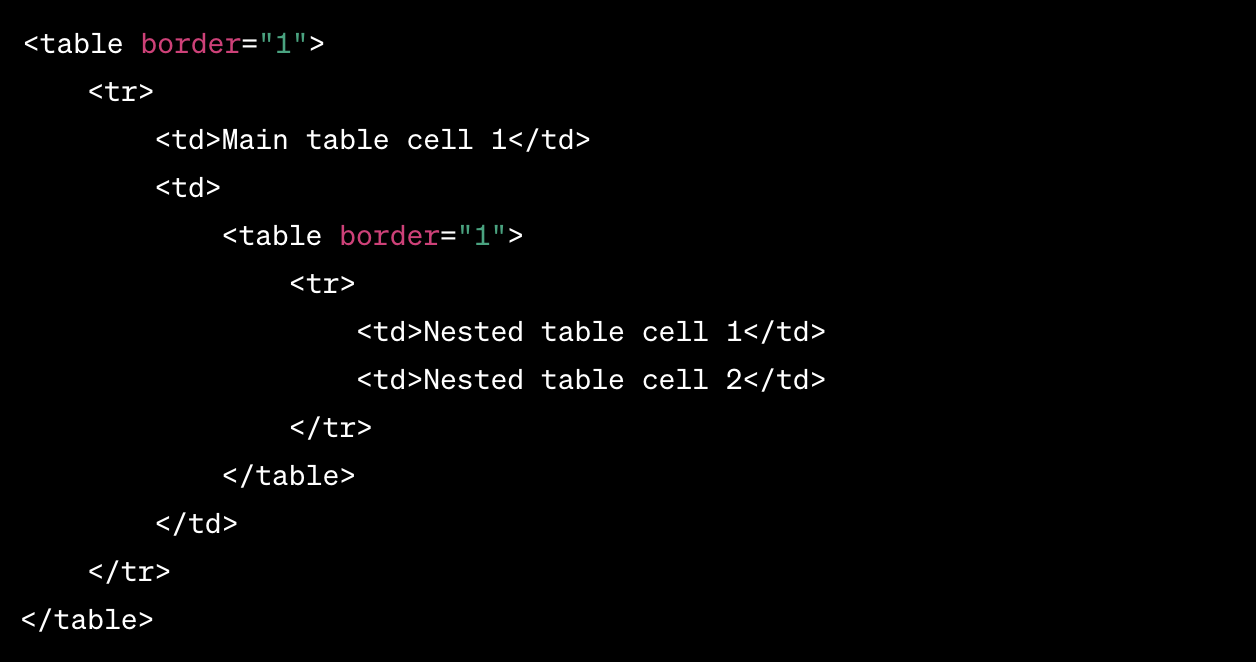Nested Tables
Imagine you're giving someone a gift box, and when they open it, they find another smaller box inside, and maybe even another inside that one. This concept of "boxes within boxes" is precisely how nested tables in HTML work. At its core, a nested table intricately organizes and structures data, allowing us to present complex information sets within a webpage neatly.
What are nested tables?
A nested table is a table positioned inside another table. When you're organizing content on a webpage and need a smaller table within a main table, that's a nested table. It’s just like when you have a big gift box inside it, and there's another smaller one.
Tables have always been an integral part of web design, helping display data in a structured manner. But sometimes, data needs more structure within that structure, leading us to nested tables. A nested table is like placing a smaller table inside one of the cells of a bigger table.
First, let's familiarize ourselves with the basic structure of an HTML table. A table is formed using the <table> tag. Within this tag, you have <tr> for each row and <td> for individual data cells. Think of <tr> as rows of boxes and <td> as the boxes.
Here is an example of how a nested table would look in HTML

How to Create a Nested Table: A Step-by-Step Guide
Step 1: Begin by creating your primary table. This will act as our "bigger box."

Step 2: Create a secondary or nested table. This is our "smaller box".

Step 3: Now, to nest our smaller table inside the main table, simply place the entire nested table code within a cell (<td></td>) of the main table.

Are Nested Tables Good HTML Practice? - The Downside
Our tools and practices must adapt to remain efficient and user-friendly as the digital world evolves. Tables have been a staple in web design for arranging data. However, using nested tables for layout has seen its heyday and now poses more challenges than benefits. Let's explore why nested tables can be problematic in today's web design landscape.
- Complexity: As you nest more tables, the HTML can become hard to read, making it difficult to manage and modify in the future.
- Load Times: Nested tables can slow down the page rendering. The browser often has to load the entire outer table before it begins displaying the nested table, leading to potential delays in displaying content to the user.
- Responsiveness: Modern websites often need to adapt to different screen sizes. Nested tables can become problematic when viewed on mobile devices or smaller screens.
- SEO Impact: Search engines prefer well-structured, semantic content. Nested tables can confuse crawlers and potentially impact your site's SEO.
- Accessibility: Screen readers used by visually impaired individuals can struggle to interpret nested tables correctly, leading to a poor user experience.
Embrace CSS for Better Web Design
Instead of nested tables, consider using CSS (Cascading Style Sheets). If nested tables are like a puzzle with multiple pieces, CSS is a smooth canvas you can paint on.
Benefits of CSS:
- Consistency: Like having a universal remote for all your devices, CSS lets you design multiple web pages with a single set of instructions.
- Universal Compatibility: CSS works well on almost all modern browsers, from desktops to mobile phones.
- Flexibility: CSS offers more design freedom without the complications of nested tables.
- Improved SEO: Search engines, like Google, prefer websites using CSS because they're easier to read and index.
If you're building or updating a website, switch to CSS. Not only will it offer a better user experience, but it also simplifies the backend work for you.
FAQs
To create a nested table in HTML, you simply place one table inside a cell of another table. You'd use the same familiar tags like <table>, <tr>, and <td>. It's essential to ensure that the entire nested table starts and finishes within a single cell of the outer table to maintain clarity and structure.
In web design, a nested table refers to placing one table within another. Essentially, it's an HTML table structure (rows and columns) embedded inside a cell of another table. This capability provided by HTML is beneficial for organizing more intricate or multi-layered data layouts.
